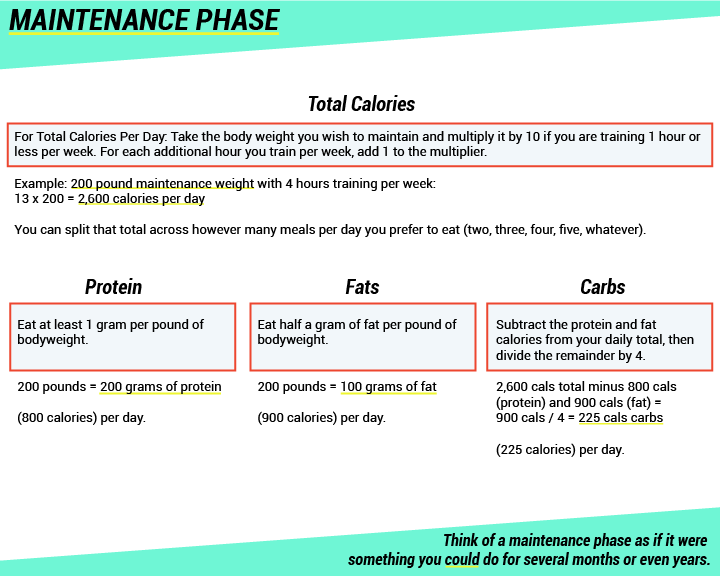There’s one thing that all the biggest, most muscular people on the planet have in common.
It’s not great genetics.
(Good genes help, but plenty of people have gotten huge without having been blessed with it at birth.)
It’s not that they all just live at the gym and do nothing else, or follow some magical workout. (When it comes to building muscle, many different approaches — low rep/high weight, high rep/low weight, straight sets, supersets, and on and on — can work. There is no one that’s “best.”)
And it’s not that they’re on performance-enhancing drugs. (You can pack on plenty of muscle naturally — look no further than any drug-free bodybuilding competition for proof.)
The thing they all have in common is this:
Patience.

Not the answer you expected? Here’s why being patient is so important.
The Problem with Bulking and Cutting
First, when most people set out to build muscle, they go through a phase where they eat a lot and train a lot. You’ve probably heard it called “bulking.”
Then, after a few weeks or months, they switch. Maybe they get self-conscious about the size the gained. Or maybe they think they’re starting to look fat. So they trim back on calories and change their training to try and burn the fat off. This phase is called “cutting.”
Most people bounce back and forth between these two phases — bulking and cutting, bulking and cutting — without making any real progress. Why? Because each new phase undoes the success of the last.
On our website, we’ve talked about Set Point Theory. It’s the idea that the body identifies with a certain weight and then becomes resistant to change. In our previous article, we discussed how it applied to weight loss. It’s one of the reasons why losing weight — and keeping it off — can be so hard.
But the concept also applies to muscle gain. Your body is used to being a certain weight. When you change that through strength training, it will take measures to go back to how it was — unless you teach it that this more muscular weight is it’s new normal.
Have a Born Fitness coach guide your gainz!
You teach your body that through what’s called a maintenance phase. In a lecture on his site Renaissance Periodization, Dr. Mike Israetel discusses how people hold themselves back if they do not include this phase in their training. (The content itself is paywalled, but totally worth buying if you like to nerd out on the science of muscle-building.)
I don’t want to give too much away or do violence to the quality and depth of his explanation. So I’ll summarize it like this: During a maintenance phase, you ease up on training a little bit. And you aim to eat what’s called an isocaloric diet, meaning you try to eat as many calories as you’d need, but not more.
Sample Muscle-Building Macronutrient Formula
This formula from Adam’s Great Abs Experiment will help:

For Total Calories Per Day:
Take the body weight you wish to maintain and multiply it by 10 if you are training 1 hour or less per week. For each additional hour you train per week, add 1 to the multiplier. So if you’d muscled up to 200 pounds, and trained 4 hours per week, you’d multiply 13 by 200 and get 2,600 calories per day as your mark. You can split that total across however many meals per day you prefer to eat (two, three, four, five, whatever).
Protein:
Eat at least 1 gram per pound of bodyweight. So if you were 200 pounds, you’d aim for 200 grams of protein (800 calories total) per day.
Fat:
Eat half a gram of fat per pound of bodyweight. So at 200 pounds, you’d target 100 grams of fat (900 calories) per day.
Carbohydrates:
Determine how many carbohydrates to eat by subtracting the protein and fat calories from your daily total, and then dividing the remainder by 4. To continue the example we’ve been using here, it would be 2,600 calories total minus 800 calories (protein) and 900 calories (fat), leaving you with 900 calories for carbs. Divide that by 4 and you get 225 calories of carbs per day.
While the length of your maintenance phase can vary, you’d want to approach it as if it were something you could do for several months or even years. Why? Because — again — you want this to be your new normal.
You want to think of building muscle not in terms of days and weeks, but months and years. The biggest, most muscular people in the world are the ones who show up for training, again and again, for years on end.
READ MORE:
Adding Muscle At Any Age: Defying Genetics And Designing The Muscle Building Workout
The New Rules Of Specialization: How To Add Muscle Mass
How To Master The Art Of “Old School” Muscle Building
5 Muscle Building Mistakes (And How To Make Gains)

Adam Bornstein is a New York Times bestselling author and the author of You Can’t Screw This Up. He is the founder of Born Fitness, and the co-founder of Arnold’s Pump Club (with Arnold Schwarzenegger) and Pen Name Consulting. An award-winning writer and editor, Bornstein was previously the Chief Nutrition Officer for Ladder, the Fitness and Nutrition editor for Men’s Health, Editorial Director at LIVESTRONG.com, and a columnist for SHAPE, Men’s Fitness, and Muscle & Fitness. He’s also a nutrition and fitness advisor for LeBron James, Cindy Crawford, Lindsey Vonn, and Arnold Schwarzenegger. According to The Huffington Post, Bornstein is “one of the most inspiring sources in all of health and fitness.” His work has been featured in dozens of publications, including The New York Times, Fast Company, ESPN, and GQ, and he’s appeared on Good Morning America, The Today Show, and E! News.
Very great explanation regarding Bulking vs Cutting!
Thanks, Redd.
True! many people don’t follow a phase even for 3 months and expect to build muscle. Well, I’ve done this before but the best way is to give each phase atleast 6 months. I must say. Amazing article mate 🙂
Thank you!
True man, all you need is patience. Makes sense.
This is very helpful article specially when it’s about to know muscles strength. Actually, I want to gain weight, so everybody tell me to eat lot of foods and exercise daily. But I was confused that how I can gain weight equally in the body and muscles strength equally so this article help me lot.
Hey Suho – happy to hear this article was helpful on your journey. Be well!
I am a fitness freaks and i always follow a healthy diet. Thanks for sharing these fitness tips.
I like your Blog. It’s good for health so I hope this training might be helpful for fitness.
How long should this maintenance period generally be?
Zane, this maintenance phase will typically last 4 weeks. So, you might follow a muscle-building plan that increases volume month over month for 3 months. Then, for month 4, you ease up on training a little bit and aim to eat as many calories as you need, but no more.
Hey, I get very helpful points for Yoga from this post and it’s truly a bunch of secrets! It’s very help for me!!
Happy to hear these tips have been useful for yoga! Thanks for reading.
Well explained article. Thanks for sharing your ideas Adam.
Thanks for reading and for sharing the kind words!
Very helpful article.Good share.Keep posting
Nice
interesting and thanks for your information 🙂
http://www.robshealthcrunch.com
Thanks for reading Mariyam.
Great content. I must say that I am not familiar with Set Point Theory but it makes a whole lot of sense. There are times one really appears to have reached their limits and cannot make anymore progress. Are there easy ways to deal with this Set Point Theory??
This article is is exactly the way I designed my own routine. I like to lift heavy and I get my best gains by lifting early in the evening after I have all my macros met. I keep my protein intake consistent throughout the day (biggest at breakfast), but bookend my workouts with carbs.
I train chest, back and arms 2x per week, shoulders and legs 1x. That’s only because I have massive legs and am trying to get my upper body caught up.
I agree with several of the other comments. Working out when ever you can is the most important thing and what works best for one may not work for all.
Hey, thank you so much for sharing this article. But I have a question that having a fitness coach is necessary when we started our journey to be a Muscular.
Thank you Adam.
Quick question, how do you take care of your bone, ligament and tendon health while lifting heavy? I’ve only recently started working out, and my trainer advices me to go heavy on most of the exercises. As I recall, I’ve seen bodybuilders lifting heavy during their initial days but later go through several injuries. How do I ensure I’m lifting heavy, while also taking care of my bone health?
Thanks in advance!